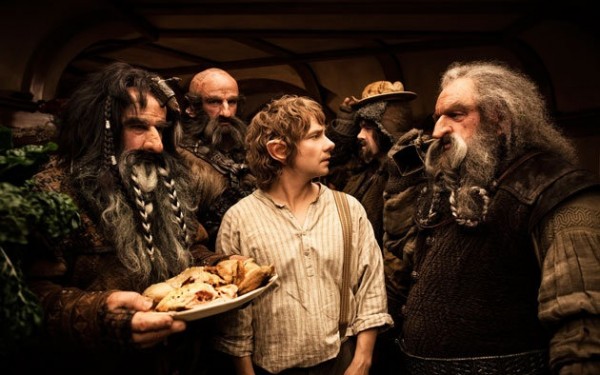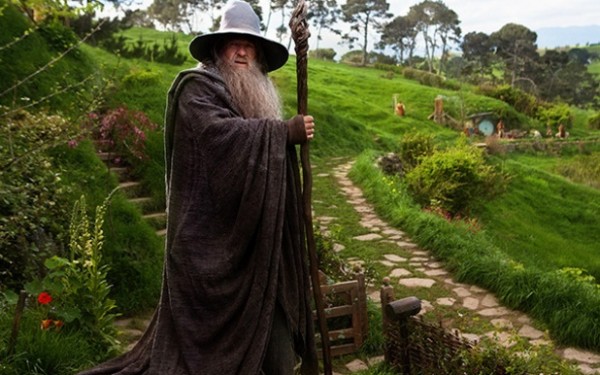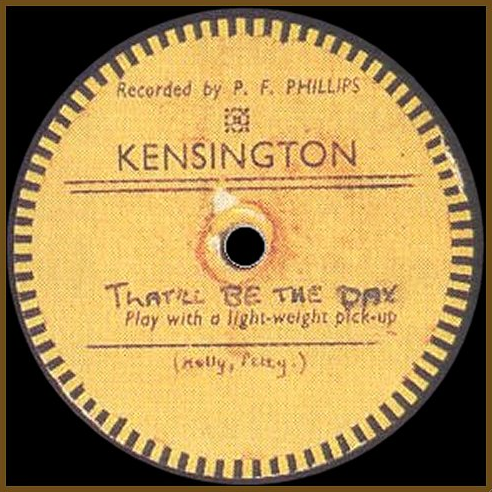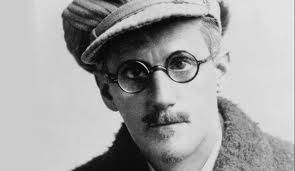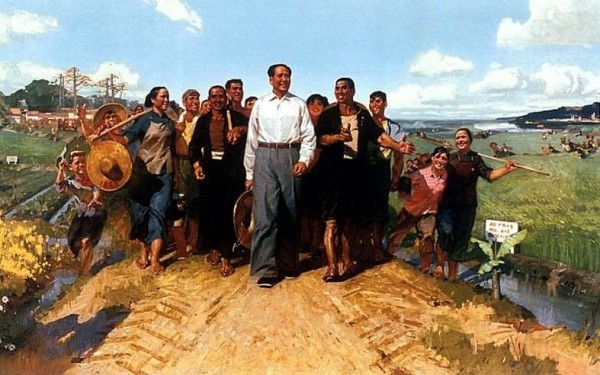The Subversive Cinema Of Crispin Glover
Look Who’s Talking ■ by Peter LoPilato
Crispin Glover is well known as an off-kilter character actor; who can forget the dippy dad, George McFly, in Back to the Future?
Glover is also a filmmaker, author and performance artist. And he’ll be combining all three when he arrives to the IU Cinema with his interactive, book tour/road show. The performances on February 15 and 16 are co-sponsored by The Ryder and will include screenings of Glover’s independently produced and self-distributed films (a different film each night) along with a slide show comprised of images from his extensively illustrated books — Glover’s books are visual works as much as they are texts. His dramatic narration will accompany the slide show. An audience Q&A and a let’s-get-acquainted book signing follow.
■
Glover’s films are provocative. In fact, that is an understatement and he believes that they are best experienced when he is present — screenings, consequently, are rare. It is Fine! Everything Is Fine will be screened on February 15. Produced and funded by Glover from a screenplay by the film’s star, Steven C. Stewart, It is Fine! dramatizes the psycho-sexual fantasies of a man with severe cerebral palsy. Combining elements of horror and exploitation, this fantastical and often humorous tale is told completely from Stewart’s point of view – that of a man who has lived for years watching people do things he will never be able to do.
Glover will present What Is It? on February 16. Described as “the adventures of a young man whose principal interests are snails, salt, a pipe,” the film’s ensemble cast includes porn stars and actors with Down Syndrome. In addition to writing and directing What Is It? Glover also appears in the film as an actor in the role of a “dueling Demi-God Auteur and the young man’s inner psyche.” Actress Fairuza Balk voices one of the snails.
It is safe to say that even adventurous filmgoers will be venturing into unchartered cinematic territory when Crispin Glover comes to town. Glover discussed his films, books and his on-again-off-again relationship with Hollywood in an interview, conducted by email, with The Ryder.
■
Ryder Your films bring imagery to screen that audiences are not often (if ever) exposed to. Many of these images are considered taboo, at least in mainstream media. How are you trying to affect your audiences with these images?
Crispin Glover I am very careful to make it quite clear that What is it? is not a film about Down Syndrome but my psychological reaction to the corporate restraints that have happened in the last 20 to 30 years in filmmaking. Specifically anything that can possibly make an audience uncomfortable is necessarily excised or the film will not be corporately funded or distributed. This is damaging to the culture because it is the very moment when an audience member sits back in their chair looks up at the screen and thinks “Is this right, what I am watching? Is this wrong, what I am watching? Should I be here? Should the filmmaker have made this? What is it?” -and that is the title of the film.
What is it that is taboo in the culture? What does it mean that taboo has been ubiquitously excised in this culture’s media? What does it mean to the culture when it does not properly process taboo in its media? So What is it? Is a direct reaction to the contents this culture’s media. I would like people to think for themselves.
Ryder You’ve been quoted as saying, “I admire films and desire to make films that go beyond the realm of that which is considered good and evil.” How would you define “good” and “evil” in filmmaking?
Crispin Glover Films that are currently financed and distributed by the film corporations and distribution corporations must sit within the boundary of that which is considered good and evil. What this means is if there is a so called “bad thing/evil thing” that sits within a corporately financed and distributed film it must necessarily be pointed at by the filmmaker; the audience is dictated to think about that so called “evil thing” in that one way. Any other way of thinking about that so called “evil thing” would be considered wrong and the film must be made in such a way that the audience understands that the filmmakers feel that this “evil thing” is only that and no other way of thinking about that “evil thing” could or should be possible. A film that goes beyond the realm of good and evil may have this same so-called “evil thing” but the filmmaker may not necessarily point at that so-called “evil thing.” The audience can think for itself as to what this so called “evil thing” really is to them. I would say that description applies to both What is it? and It is fine! EVERYTHING IS FINE.
Ryder You’ve worked within and outside of the Hollywood studio system. I would assume that both have advantages and disadvantages. Can you talk a bit about those?
Crispin Glover I see myself as someone who has been raised with the understanding of how corporately funded and distributed film business works. I have had a certain amount of acceptance within that business.
While I am grateful to that system to have made a living in it for about 35 years I have also had questions about how to make the corporately funded and distributed film business more truly educational. Within the corporately funded and distributed film world I see myself as an actor for hire and am grateful to that system to have made a living in it.
In the year 2000 this was around the same time that the first Charlie’s Angels film was coming to me. I realized that the money I made from that film could be put straight into What is it? after Charlie’s Angels came out it did very well financially and was good for my acting career. I started getting better roles that also paid better and I could continue using that money to finance my films that I am so passionate about. I have been able to divorce myself from the content of the films that I act in and look at acting as a craft. Usually filmmakers have hired me because there is something they have felt would be interesting to accomplish with me in their film. If for some reason the director is not truly interested in doing something that I personally find interesting with the character then I can console myself that with the money I am making to be in their production I can help to fund my own films. Usually though I feel as though I am able to get something across as an actor that I feel good about. It has worked out well.
Ryder The very personal, self-distribution of your films is admirable, and pays tribute to early film exhibition, when live performance and music were very much part of the program. Was this the inspiration for you, or are you recalling something different?
Crispin Glover Thank you! The live aspects of the shows are not to be underestimated.
When I first started publishing the books in 1988 people said I should have book readings. But the books are so heavily illustrated and the way the illustrations are used within the books they help to tell the story so the only way for the books to make sense was to have visually representations of the images. This is why I knew a slide show was necessary. It took a while but in 1992 I started performing what I now call Crispin Hellion Glover’s Big Side Show Part 1. I perform a one hour dramatic narration of eight different books I have made over the years. The illustrations from the books are projected behind me as I perform the show. The content of that show has not changed since I first started performing it. But the performance of the show has become more dramatic as opposed to more of a reading. The books do not change but the performance of the show of course varies slightly from show to show based the audience’s energy and my energy.
People sometimes get confused as to what Crispin Hellion Glover’s Big Slide Show is, so now I always let it be known that it is a one hour dramatic narration of eight different profusely illustrated books that I have made over the years. The fact that I tour with the film helps the distribution element. I consider what I am doing to be following in the steps of vaudeville performers. Vaudeville was the main form of entertainment for most of the history of the US. It has only relatively recently stopped being the main source of entertainment, but that does not mean this live element mixed with other media is no longer viable.
Volcanic Eruptions was a business I started in Los Angeles in 1988 as Crispin Hellion Glover doing business as Volcanic Eruptions. It was a name to use for my book publishing company. About a year later I had a record/CD come out with a corporation called Restless Records. When I had sold the same amount of books as CD/records, it became clear to me that, because I had published my own books, I had a far greater profit margin. It made me very suspicious of working with corporations as a business model.
It is enjoyable to travel and visit places, meet people, perform the shows and have interaction with audiences and discussions about the films afterwards. The forum after the show is also not to be under-estimated as a very important part of the show for the audience. This also makes me much more personally grateful to the individuals who come to my shows as there is no corporate intermediary. The drawbacks are that a significant amount of time and energy to promote and travel and perform the shows. The number of people seeing the films is much smaller than if I were to distribute the films in a more traditional sense.
The way I distribute my films is certainly not traditional in the contemporary sense of film distribution but perhaps is very traditional when looking further back at vaudeville era film distribution. If there are any filmmakers that are able to utilize aspects of what I am doing then that is good. It has taken many years to organically develop what I am doing now as far as my distribution goes.
Ryder Your books Rat Catching and Oak-Mot are altered versions of works that were in the public domain – could a similar approach work in filmmaking?
Crispin Glover I started making my books in 1983 for my own enjoyment without the concept of publishing them. I had always written and drawn and the books came as an accidental outgrowth of that. I was in an acting class in 1982 and down the block was an art gallery that had a book store upstairs. In the book store there was a book for sale that was an old binding taken from the 1800’s and someone had put their art work inside the binding. I thought this was a good idea and set out to do the same thing. Sometimes I would find images that I was inspired to create stories for or sometimes it was the binding or sometimes it was portions of the texts that were interesting. Altogether, I made about twenty of them.
When I was editing my first feature film What is it? There was a reminiscent quality to the way I worked with the books because as I was expanding the film in to a feature from what was originally going to be a short, I was taking film material that I had shot for a different purpose originally and re-purposed it for a different idea and I was writing and shooting and ultimately editing at the same time. Somehow I was comfortable with this because of similar experiences with making my books.
There are definitely filmmakers that have taken existing film works and reworked them for a different interpretation of the original footage. Sometimes it is very effective. I saw the 1936 film Rose Hobart by the American Artist Joseph Cornel projected at UCLA in the 1980’s. He had taken portions of a film titled East of Borneo and edited it with footage from at least one other film. I quite liked that film when I saw it. I am sure there are a lot of other good examples of this being done.
Ryder Many of your works, film and print, independent and commercial, focus on what some would consider “uncouth” objects, i.e. snails (What is It?), worms (Oak-Mot), rats (Rat Catching and Willard), cockroaches (Wild at Heart). Similarly, many of the women in What is It? are shown wearing various animal masks (monkeys, elephants, etc.). What do you find attractive or interesting about insects and animals generally? What do you think these things can tell your audience about themselves, if anything?
Crispin Glover I am careful not to publicly over-analyze the imagery in my own films. Wild at Heart is of course a David Lynch film. The nature of What is it? lets people’s thoughts come in to play. If I let people know what my thoughts are on the imagery in the film it can make people feel they are wrong in interpreting it differently. It is important for people to interpret the imagery in the way that make sense to them. I will say that I knew the macro shots of the snails in What is it? would help to personalize them in a way that would not happen if shot with a non-macro lens.
Ryder You recorded the pop classic These Boots Art Made for Walkin’ and put your own personal stamp on it. Is there a classic Hollywood film that you would like to do the same with?
Crispin Glover It was produced on the record The Big Problem ≠ The Solution. The Solution = Let It Be by Barnes and Barnes. They had asked me to record a top-40 song. I was a bit reluctant to do this, but ended up choosing that song. I don’t have any film in my mind that would necessarily be good to remake, but I would never say never.
Ryder Who are a few of your favorite filmmakers? Is there anyone you would especially like to work with if you were given the opportunity?
Crispin Glover Werner Herzog, Rainer Werner Fassbinder, Luis Buñuel, Stanley Kubrick, Todd Browning, FW Murnau, Fritz Lang, Akira Kurosawa, Milos Foreman, Roman Polanski, David Lynch, John Waters, Russ Meyer, Karel Zeman, Abbas Kiarostami, Wong Kar-wai, Ken Russell, Gaspar Noe, Orson Wells, John Cassavetes, Dennis Hopper….
There are many more. My favorite film lists go into the hundreds and there are a lot of my very favorite films that are just one-offs where the director only made one film. Many of the above directors have made multiple films that I admire.
▲
The Ryder, February 2013


